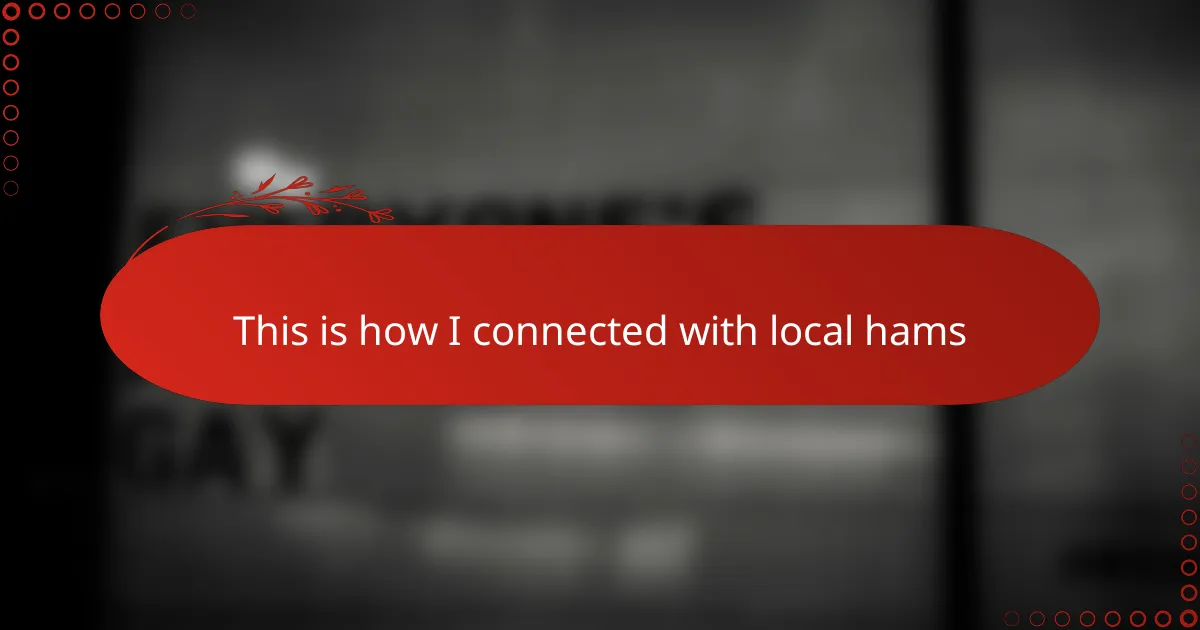Key takeaways
- Local ham radio operators foster a strong sense of community, sharing knowledge and providing support during emergencies.
- Essential equipment, such as transceivers and antennas, significantly impacts communication quality, highlighting the importance of basic accessories.
- Joining local ham radio events offers hands-on learning opportunities and fosters personal connections, enhancing the overall experience.
- Active engagement and genuine listening build trust and strengthen relationships within the ham radio community.
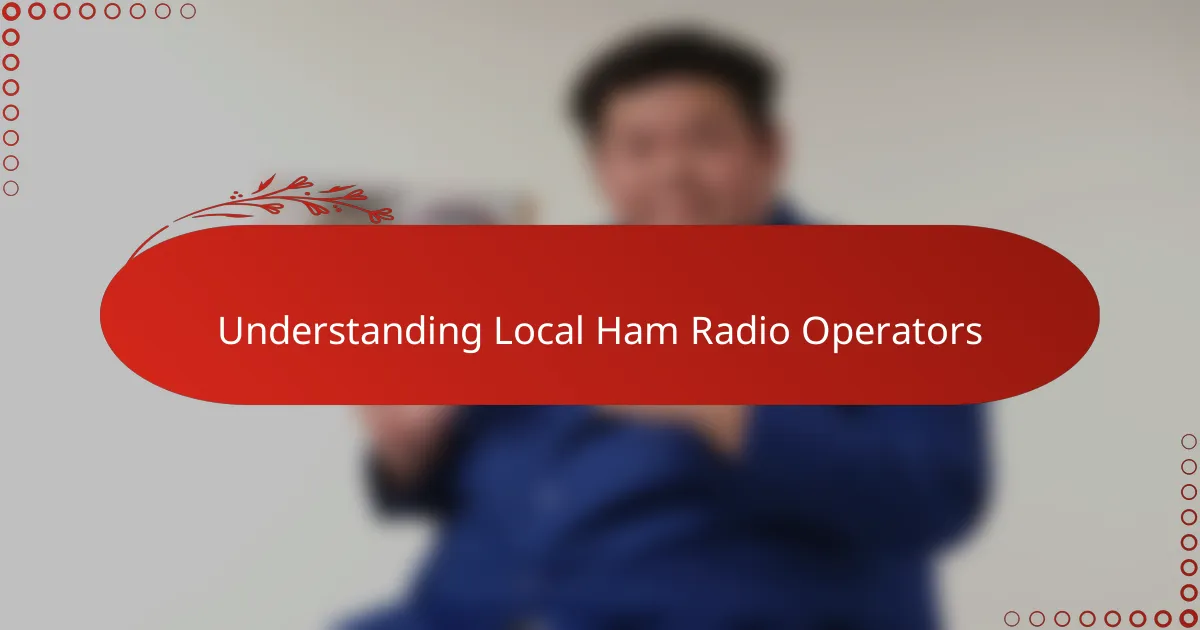
Understanding Local Ham Radio Operators
Local ham radio operators often share a deep passion for communication and technology, but what really sets them apart is their willingness to help and connect with others. I remember my first contact with a local ham; it felt like stepping into a warm community where everyone’s voice matters. Have you ever experienced that instant camaraderie that makes you feel like you belong?
Their knowledge can be surprisingly vast, ranging from technical setups to emergency preparedness. It’s not just about the radios or the signals—it’s about the stories exchanged and the friendships forged over the airwaves. I found that understanding this human side is what made all the technical jargon less intimidating and much more exciting.
What struck me most about local hams is their dedication to public service and education. They’re always ready to share advice or lend a hand during emergencies. This commitment gave me a new appreciation for how critical these operators are beyond just being hobbyists—I started seeing them as real community heroes, not just voices on a radio.
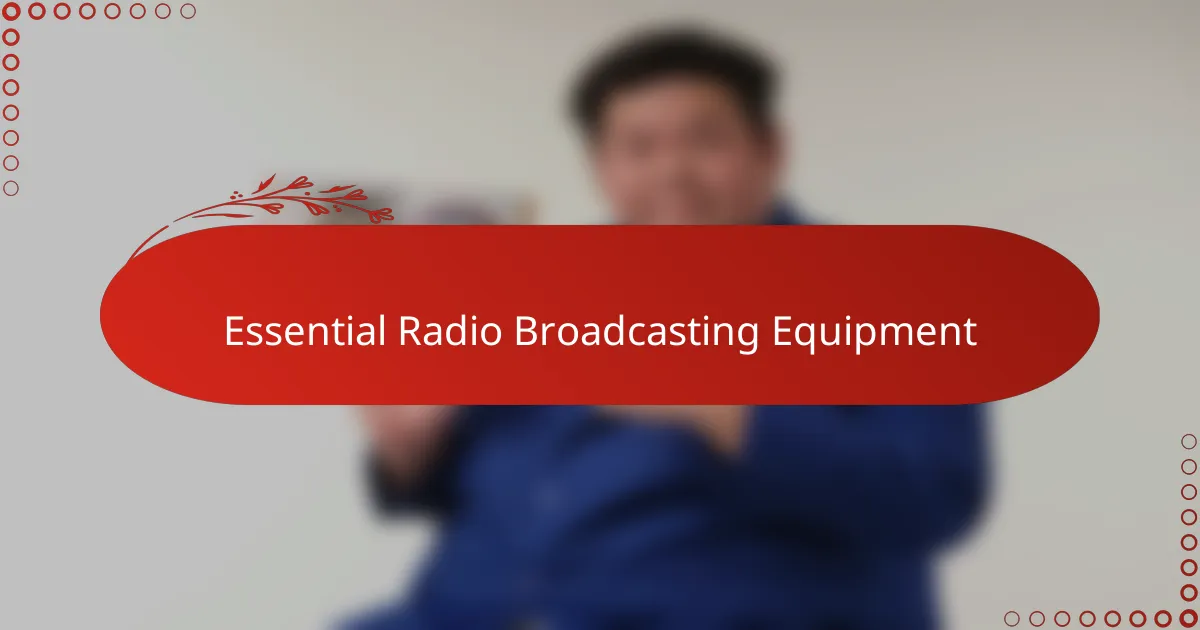
Essential Radio Broadcasting Equipment
Getting started with local ham radio means getting familiar with some essential equipment. A reliable transceiver, which both transmits and receives signals, is the heart of any setup. I remember struggling to decide between models until a seasoned ham reassured me that clarity and durability beat fancy features every time.
Antennas are another critical piece—you can have the best radio, but without a good antenna, your signal won’t go far. When I first built my own antenna, the thrill of hearing clear voices miles away made all the effort worthwhile. Have you ever experienced that moment when your setup finally clicks, and you realize the true power of your gear?
Finally, don’t overlook the importance of accessories like microphones, headphones, and power supplies. These might seem minor, but they make communication smoother and more enjoyable. I once thought a basic headset would do, but upgrading made conversations so much clearer that I couldn’t help but smile during every chat.
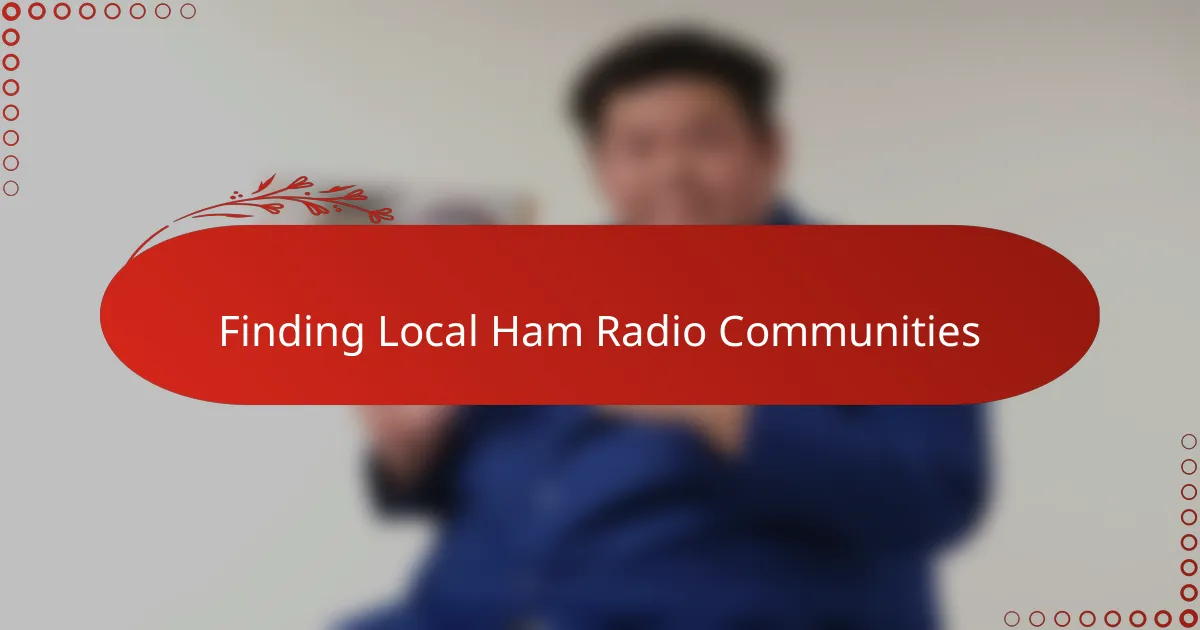
Finding Local Ham Radio Communities
Finding local ham radio communities was easier than I expected once I started asking around at local electronics shops and community centers. It amazed me how many passionate operators were just waiting to share their knowledge and stories; you just have to take the first step and reach out.
I also discovered that local amateur radio clubs usually have regular meetings or events. Attending one felt a bit nerve-wracking at first, but the welcoming atmosphere quickly put me at ease—people were genuinely interested in hearing about my journey and eager to offer advice. Isn’t it amazing how a room full of strangers can turn into your radio family in no time?
Online platforms dedicated to ham radio also helped me find nearby operators with similar interests, opening up conversations beyond just face-to-face meetings. Sometimes, a quick message online led to a scheduled on-air chat that turned into a lasting friendship. Have you tried reaching out through those digital ham networks yet?
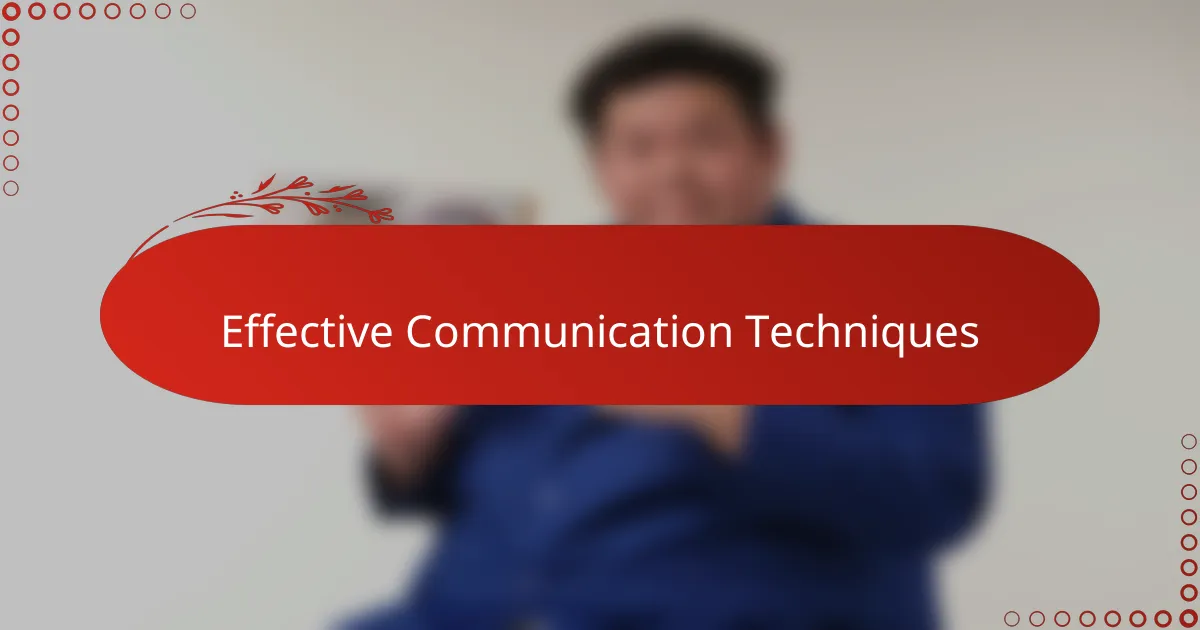
Effective Communication Techniques
Effective communication with local hams hinges on clarity and patience. I quickly learned that speaking slowly and enunciating properly makes a huge difference—especially when signals fade or interference sneaks in. Have you ever tried holding a meaningful conversation when static keeps cutting in? It’s frustrating, but staying calm and clear keeps the connection alive.
Another technique I found invaluable is active listening. I don’t just wait for my turn to talk; I genuinely listen to what the other operator is saying. This attentiveness not only improves the flow of conversation but also builds trust. It’s amazing how a simple “I hear you loud and clear” can foster instant rapport over the airwaves.
Using proper call signs and etiquette also plays a big role in effective communication. Early on, I stumbled through my introductions and felt embarrassed, but with a bit of guidance from seasoned hams, I found that respecting these traditions earns you respect in return. Isn’t it satisfying when a well-timed “over” or “roger” keeps the dialogue smooth and professional?

Joining Local Ham Radio Events
Joining local ham radio events was a game-changer for me. Walking into my first club meeting, I felt a mix of excitement and jitters, but that quickly faded as experienced hams greeted me warmly and invited me to join their conversations. Have you ever noticed how shared interests can break the ice almost instantly?
At these events, it’s not just about chatting on the radio. I learned so much hands-on—from tweaking antennas to understanding signal propagation—directly from folks who clearly love what they do. The mix of practical demos and friendly chats made learning feel less like a chore and more like a spontaneous adventure.
What surprised me most was the sheer energy in the room during field days and contests. The buzz of radios tuning, people coordinating contacts, and the glow of shared purpose created a unique connection that’s hard to describe. Have you ever been in a place where everyone’s enthusiasm just lifts you up? That’s exactly what local ham radio events did for me.
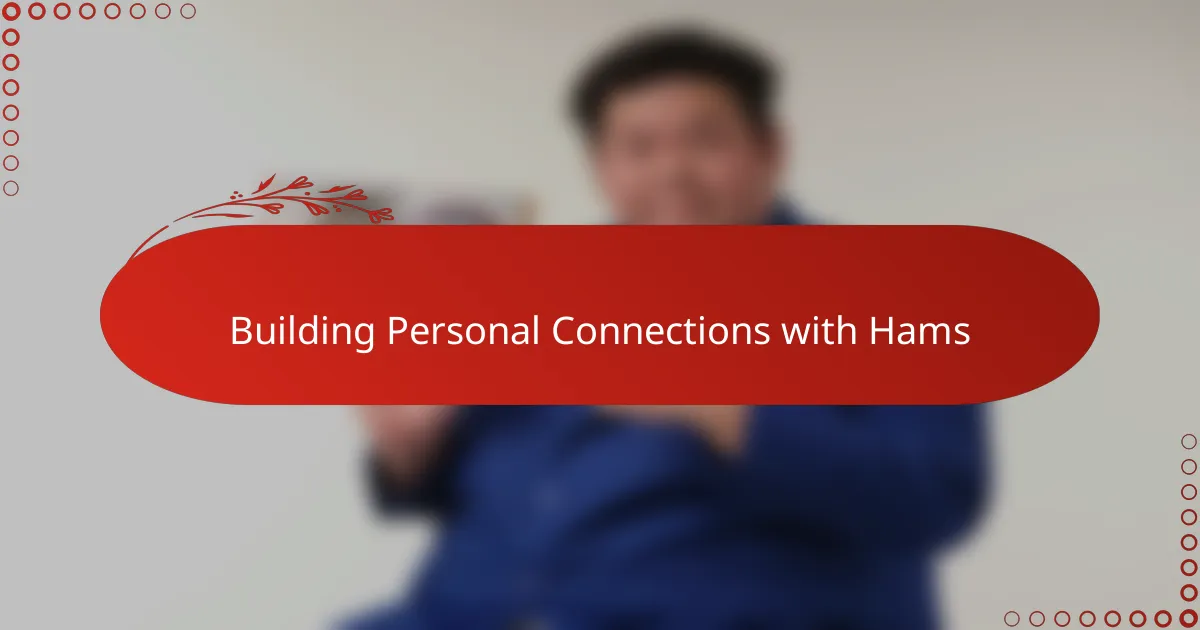
Building Personal Connections with Hams
Building personal connections with local hams goes beyond just exchanging call signs; it’s about sharing moments that make you feel part of something bigger. I still recall the first time I reached out on a local frequency, nervous and unsure, only to be met with genuine warmth and curiosity. Have you ever felt that instant spark of friendship through a radio wave before meeting someone face to face?
What helped me deepen these bonds was taking the time to listen—not just to the transmissions but to the stories behind them. Each operator had unique experiences that made our conversations richer and more meaningful. Over time, those voices on the airwaves became friends I looked forward to talking with, turning static-filled signals into heartfelt exchanges.
Sometimes, the simplest gestures made a huge difference. Offering a little advice or checking in during emergency drills created trust and showed I cared. Have you noticed how genuine interest and support can transform casual contacts into lasting friendships? For me, those moments cemented my place in the local ham community in a way that no technical skill alone ever could.
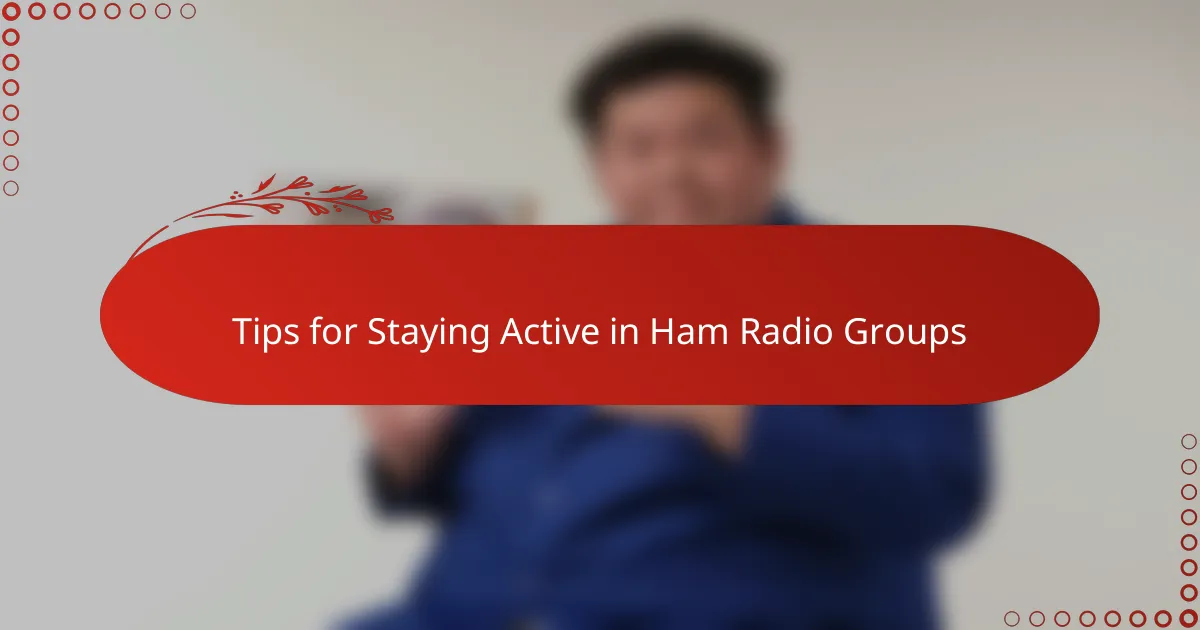
Tips for Staying Active in Ham Radio Groups
Staying active in ham radio groups means more than just showing up—you’ve got to engage consistently. I found that regularly joining nets and check-ins kept me on everyone’s radar and made me feel like part of the rhythm. Have you noticed how these routine contacts turn into familiar voices that brighten your day?
Don’t hesitate to volunteer for group activities or emergency drills. Jumping in not only sharpens your skills but also shows you’re dependable, which builds trust fast. I remember being invited to coordinate a local exercise after pitching in at a smaller event—it felt great knowing my involvement made a real difference.
Lastly, don’t forget the power of just reaching out casually. Sending a quick check-in or sharing a new tip I learned sparked conversations that went beyond radio waves. Sometimes, a simple “How’s your setup coming along?” opened doors to unexpected friendships that lasted long after the signal faded.
